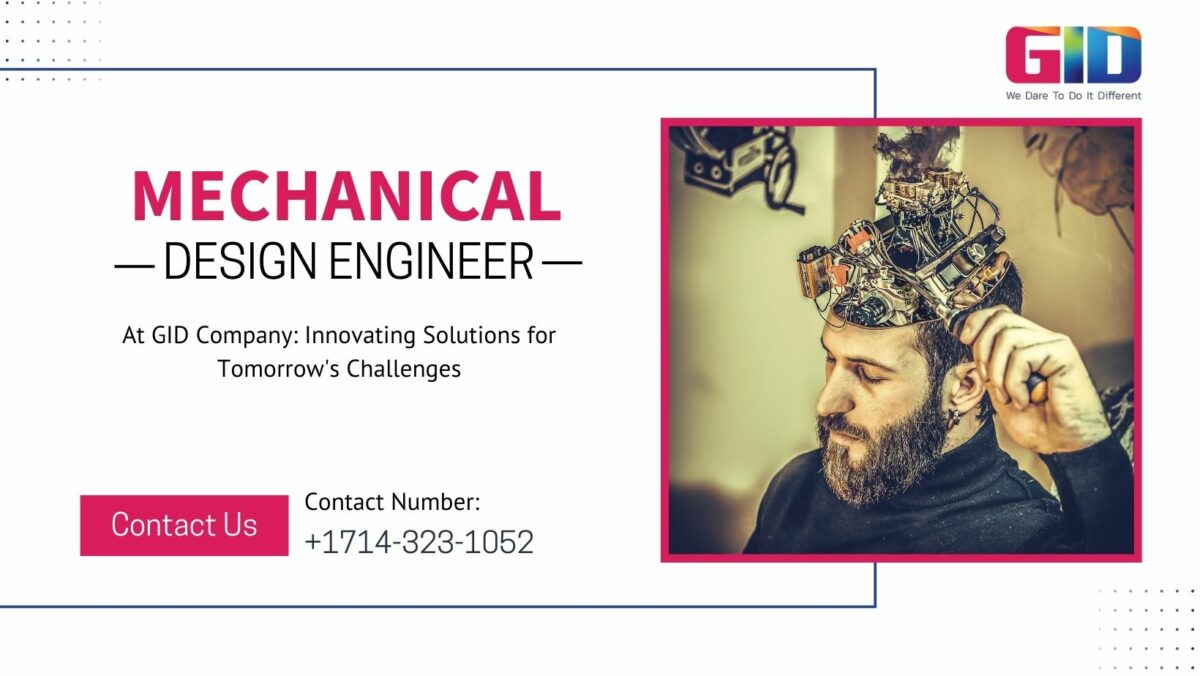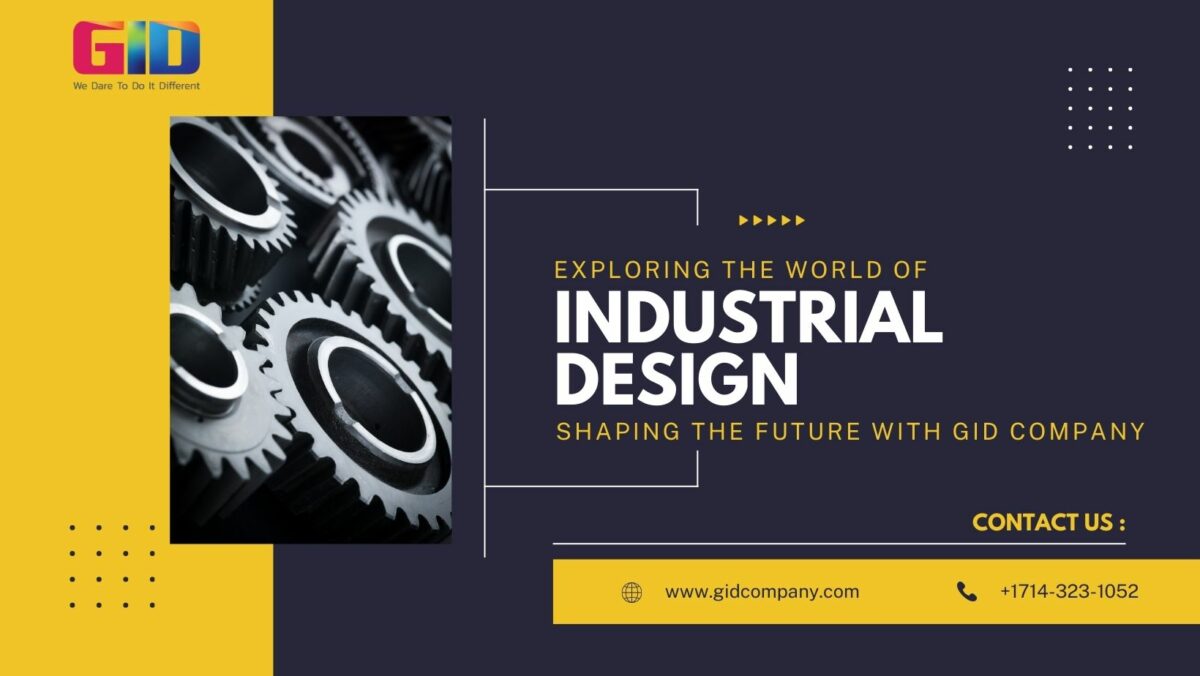Mechanical design is the cornerstone of innovation in countless industries. It’s the art of transforming concepts into tangible, functional machines, and systems. If you’re a mechanical design engineer, you understand the thrill of seeing your designs come to life. We delve into the world of mechanical design, explore the role of a mechanical design engineer, and take a closer look at GID Company, a trailblazer in the field. Along the way, we’ll answer the essential question: What are the steps in mechanical machine design?
The Role of a Mechanical Design Engineer
Mechanical design engineers are the architects of machinery, responsible for turning ideas into reality. They play a pivotal role in the product development cycle, from the initial concept to the final product. Let’s break down their role:
- Conceptualization: The journey begins with brainstorming and conceptualizing ideas. Mechanical design engineers collaborate with cross-functional teams to understand project requirements, objectives, and constraints.
- Research and Analysis: Once the concept is clear, engineers conduct in-depth research and analysis to understand the project’s feasibility. They evaluate materials, technologies, and regulations that might impact the design.
- Designing: This is the heart of the job. Engineers use computer-aided design (CAD) software to create detailed schematics and blueprints. They consider factors like structural integrity, functionality, and manufacturability.
- Prototyping: After the initial design is complete, engineers often create prototypes to test their concepts. This stage helps identify design flaws and areas for improvement.
- Testing and Validation: Rigorous testing follows prototyping to ensure that the machine or system meets the required standards for performance, safety, and efficiency.
- Iterating: Feedback from testing may lead to design modifications and multiple iterations until the final design is perfected.
- Documentation: Engineers maintain thorough documentation of their designs, which includes drawings, specifications, and manuals for manufacturing and assembly.
- Collaboration: Mechanical design engineers collaborate closely with other departments, such as manufacturing, materials, and quality control, to ensure a smooth transition from design to production.
What Are the Steps in Mechanical Machine Design?
Now, let’s delve deeper into the steps involved in mechanical machine design:
Step 1: Define the Problem and Objectives
Every design begins with a clear understanding of the problem that needs to be solved and the objectives that must be met. This involves close collaboration with clients, stakeholders, and end-users.
Step 2: Research and Conceptualization
Gathering information and brainstorming ideas is a critical phase. Engineers explore existing solutions, study market trends, and identify the best design approaches.
Step 3: Preliminary Design
This stage involves creating rough sketches and basic layouts. It’s about visualizing the initial concept before diving into detailed design work.
Step 4: Detailed Design
Using CAD software, engineers create detailed plans, including 2D and 3D models. They consider every aspect of the design, such as dimensions, materials, and manufacturing processes.
Step 5: Material Selection
Choosing the right materials is crucial for the success of any mechanical design. Engineers evaluate factors like strength, durability, weight, cost, and availability.
Step 6: Prototype Development
Building a prototype allows engineers to test their designs in the real world. It helps identify flaws, make improvements, and refine the design.
Step 7: Testing and Validation
Engineers rigorously test prototypes to ensure they meet performance, safety, and quality standards. This phase often includes simulations, stress tests, and real-world trials.
Step 8: Optimization
Feedback from testing and validation guides the optimization process. Engineers work to enhance the design’s efficiency, reliability, and cost-effectiveness.
Step 9: Documentation
Comprehensive documentation is essential for manufacturing and assembly. This includes detailed drawings, bills of materials, and assembly instructions.
Step 10: Manufacturing and Production
Once the design is finalized, it’s handed over to the manufacturing team. Engineers collaborate closely with manufacturers to ensure the design is faithfully translated into a functional product.
Step 11: Quality Control
Quality control measures are in place to ensure that every manufactured unit meets the design specifications and quality standards.
Step 12: Post-Production Support
Mechanical design engineers continue to support the product through its lifecycle, addressing any issues that may arise and making improvements as needed.
GID Company: A Leader in Mechanical Design
GID Company, with its unwavering commitment to excellence, stands as a testament to the art of mechanical design. Founded on the principles of innovation and precision, GID has consistently delivered cutting-edge mechanical designs across various industries.
GID’s success can be attributed to its dedicated team of mechanical design engineers who follow a meticulous approach to design. They embrace the latest technologies, including advanced CAD software and simulation tools, to craft designs that are both efficient and sustainable.
One of GID’s standout qualities is its ability to collaborate seamlessly with clients and partners, ensuring that every project aligns with the client’s vision and objectives. This commitment to understanding the client’s needs sets GID apart in the industry.
Conclusion
Mechanical design is a multifaceted discipline that demands creativity, precision, and a methodical approach. Mechanical design engineers are the driving force behind the creation of innovative machinery and systems that shape our world.
Throughout this blog, we’ve explored the essential steps in mechanical machine design and highlighted the remarkable work of GID Company in the field of mechanical design. Their dedication to excellence serves as an inspiration to mechanical design engineers everywhere as they continue to push the boundaries of what is possible in the world of mechanical design.
Remember, mechanical design is not just about creating machines; it’s about crafting solutions that drive progress and improve lives. Whether you’re an aspiring mechanical design engineer or a seasoned professional, the journey of mechanical design is an exciting and rewarding one, filled with endless possibilities. You can Call Jim at +1714-323-1052 or You can like our Facebook page and follow us on Twitter as well.




